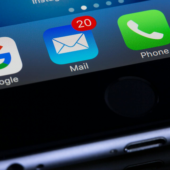Personal finance software isn’t just something for accountants and personal finance managers. Everyone can benefit from user-friendly software to help manage their money. The right solution can make it easier to plan and track your spending, helping you become a more fiscally responsible adult.
There are plenty of easy-to-use tools available. You don’t have to stress about needing accounting skills or struggling to learn a complicated piece of software. Here’s what to look for in personal finance software so you can choose the best tool for your needs.
Personal finance software allows you to improve your financial management by making it easy to organize, track, and record how you spend your money. This can help you make smarter spending decisions and achieve your financial goals. Here are some things you can do with a comprehensive software solution:
Personal finance software can ultimately provide transparency, giving you a clear snapshot of your money management habits and financial health. This can help you fine-tune your spending habits over time. By simplifying your finances, the right software can help you conquer fears you may have related to money and how you manage it — one of the first steps toward improving your financial situation.
So, what’s the best personal finance software? In truth, there is no one best choice. Every person has unique needs and goals when it comes to money management. The best software is the one that’s right for you. That said, there are some key characteristics to consider when shopping around.
Look for a simple interface that is intuitive, easy to understand, and meets your needs. For example, if you’re interested in tracking spending, you might want the functionality to categorize expenses. You may also want an interface that works on a desktop/laptop and offers a mobile app for your Android or iOS device. This allows you to handle financial planning even when you’re on the go.
Most personal finance tools offer a free version as well as upgraded versions you can get for a monthly or annual fee. You can start off with a free version — or test-drive a few different options — and decide if you want to upgrade later. This will usually unlock premium features, such as integrated bill pay or a free credit score.
Being able to generate reports — for example, of your spending — is a great way to track trends in your financial life over time. Monthly or annual reports can provide a big picture snapshot of your financial health. This can help you determine whether you need to make any changes. You can also share these reports with your bookkeeper or accountant or use them yourself when filing your taxes.
If you’re going to spend money on a deluxe finance app, it’s good to make sure that you’re getting the most out of it. What educational tools are offered to help you learn to use the tool? For example, some tools provide knowledge hubs, video blogs, and informational articles to help users master the technology.
In case you run into technical problems with your personal finance software, be sure you have someone to turn to. Before investing in a product, see what customer support options are available. Is there a telephone, chat, or email support line? What are the hours of operation? Is help available 24/7?
Some personal finance tools offer tax support or integrate with tax software. For example, if you’re a freelancer dealing with small business accounting, you may want your expenses to automatically be recorded for tax purposes. This can save time and effort when tax season rolls around. You won’t have to spend time looking for the data you need.
Confirm that any tool you get includes financial integration. This allows you to link to bank accounts for credit cards, checking, and savings accounts. Some tools can also link to your financial institution’s investment accounts, allowing for real-time investment tracking. In some cases, you’ll have to upgrade to a premium version for those financial integrations.
Personal finance software can simplify your money management, helping you plan, track, and record your earnings, spending, savings, retirement planning, and investments. By providing structure and clarity regarding your various financial accounts, the right budgeting tool can also help you gain insights into how to establish a positive relationship with money instead of fearing it.
Adjusting your mindset about money in this manner is one thing you’ll learn in the “I Will Teach You to Be Rich” book and six-week program. The key to smart, long-term money management isn’t about denying yourself every pleasure — which is an unsustainable way to live — but spending selectively on things that matter to you.
With the right tools and attitude, you can improve your money management.
100% privacy. No games, no B.S., no spam. When you sign up, we’ll keep you posted
According to Gallup research, 62 is the average retirement age for Americans; however, there is no one right retirement age. The ideal age for you will depend on many factors,
Read More
Most people think financial literacy means fixing spending habits like daily $4 lattes and investing the money in some little-known financial instrument your college roommate can’t shut up about on
Read More
Many of us like the thought of investing. Who wouldn’t want to grow their money without too much effort? But it can be a complicated mess of jargon, different opinions,
Read More
Copyright I Will Teach YouTo Be Rich ©2021






